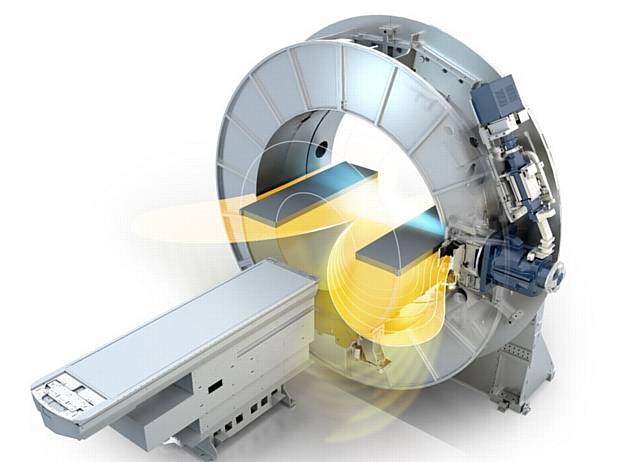The Christie invests in tumour-busting kit
Reporter: Lucy Kenderdine
Date published: 13 October 2016

WORK begins to install pioneering radiotherapy machine which can "see and treat" cancer with pinpoint accuracy
INSTALLATION of a pioneering radiotherapy machine which can "see and treat" cancer with pinpoint accuracy has begun at The Christie.
The MR-guided linear accelerator will be one of only seven in the world when the machine is fully built by the end of the year.
It combines magnetic resonance imaging (MRI) scanning and tumour-busting radiotherapy treatment in one hi-tech package.
The MR-linac is an advanced form of radiotherapy machine that will potentially enable The Christie to deliver more targeted and more personalised radiotherapy for patients.
Dr Ananya Choudhury said: "The MR-linac will be a revolution in radiotherapy and I believe it will make a big difference to our patients in the future. It lets us see tumours very clearly and treat them at the same time with pinpoint accuracy.
"We will be able to adapt the radiotherapy to a patient's shape in real time, bringing on a new era of personalised radiotherapy. As well as better clinical outcomes, we expect MR-linac will lessen side effects.
"We are so excited that with the help of The Christie charity we are bringing the very latest, most advanced radiotherapy technology to The Christie."
Fundraisers at The Christie charity are aiming to raise £1m towards the overall £5.3m cost of the MR-linac. The remaining capital funding is being provided by The Christie NHS Foundation Trust.
Radiotherapy is the second most common treatment for cancer. Despite big advances in the accuracy of radiotherapy over recent years, the treatment can still cause side effects as well as kill cancer cells.
The MR-linac will precisely locate tumours, tailor the shape of X-ray beams in real time, and lock-on to the tumour during treatment, to accurately deliver radiotherapy even when tumour tissue is moving during treatment (for example a tumour in the lung will move up and down as a person breathes).
MR-linac will also see if a tumour changes shape, location or size between treatment sessions to ensure that the cancer is targeted accurately for treatment.
As the accuracy of MR-linac treatment is so good, it may be possible to deliver higher doses of radiotherapy whilst preserving healthy tissue. This will potentially result in a more effective treatment for patients with fewer side effects and fewer treatment visits.
For patients with cancer close to one of their key organs such as the heart, spine, brain or reproductive organs, the increased accuracy reduces the risk of radiotherapy treatment causing long term problems.
The Christie is working with seven leading international cancer centres in North America and Europe as part of the Elekta MR-linac consortium. The MRI technology partner for Elekta is the global electronics giant Philips.
"Elekta is delighted to be working with The Christie on this exciting and ambitious programme," says Kevin Brown, Elekta's vice president of scientific research.
"The Christie has been at the forefront of pioneering developments in radiotherapy for more than 100 years and Elekta's partner on many of the major innovations for example, our first multileaf collimator, Intensity Modulated Radiation Therapy and Cone Beam CT image guidance.
"We believe that MR-linac is the next generation of radiotherapy machine and has the potential to transform the future of cancer care."
Most Viewed News Stories
- 1Milan Bar in Lees and The Bank at Delph close doors with immediate effect
- 2Punch perfect Kyle is Oldham's latest national boxing champ
- 3Group wanted following attempted robbery incident on a tram in Shaw
- 4Five arrested after two young victims are robbed
- 5Shaw prospect Rafferty aims to shine at massive 'Ring Warriors Unleashed' show




